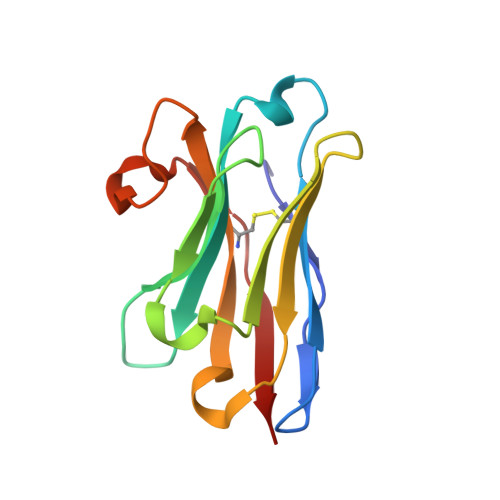Structural evidence for the critical role of the prion protein hydrophobic region in forming an infectious prion.
Abskharon, R., Wang, F., Wohlkonig, A., Ruan, J., Soror, S., Giachin, G., Pardon, E., Zou, W., Legname, G., Ma, J., Steyaert, J.(2019) PLoS Pathog 15: e1008139-e1008139
- PubMed: 31815959
- DOI: https://doi.org/10.1371/journal.ppat.1008139
- Primary Citation of Related Structures:
6HEQ, 6HER, 6HHD - PubMed Abstract:
Prion or PrPSc is the proteinaceous infectious agent causing prion diseases in various mammalian species. Despite decades of research, the structural basis for PrPSc formation and prion infectivity remains elusive. To understand the role of the hydrophobic region in forming infectious prion at the molecular level, we report X-ray crystal structures of mouse (Mo) prion protein (PrP) (residues 89-230) in complex with a nanobody (Nb484). Using the recombinant prion propagation system, we show that the binding of Nb484 to the hydrophobic region of MoPrP efficiently inhibits the propagation of proteinase K resistant PrPSc and prion infectivity. In addition, when added to cultured mouse brain slices in high concentrations, Nb484 exhibits no neurotoxicity, which is drastically different from other neurotoxic anti-PrP antibodies, suggesting that the Nb484 can be a potential therapeutic agent against prion disease. In summary, our data provides the first structure-function evidence supporting a crucial role of the hydrophobic region of PrP in forming an infectious prion.
Organizational Affiliation:
Structural Biology Brussels, Vrije Universiteit Brussel (VUB), Brussels, Belgium.














